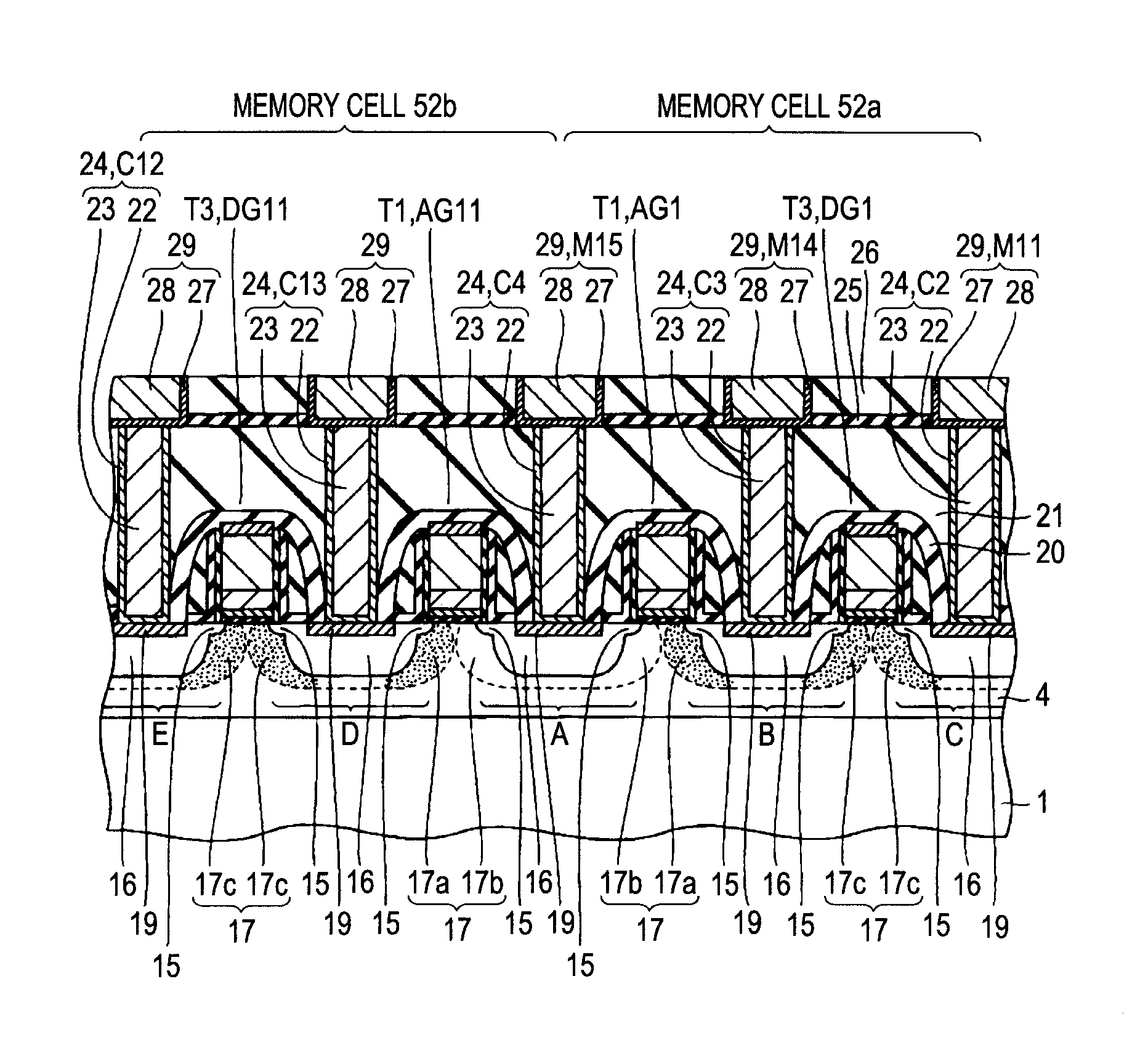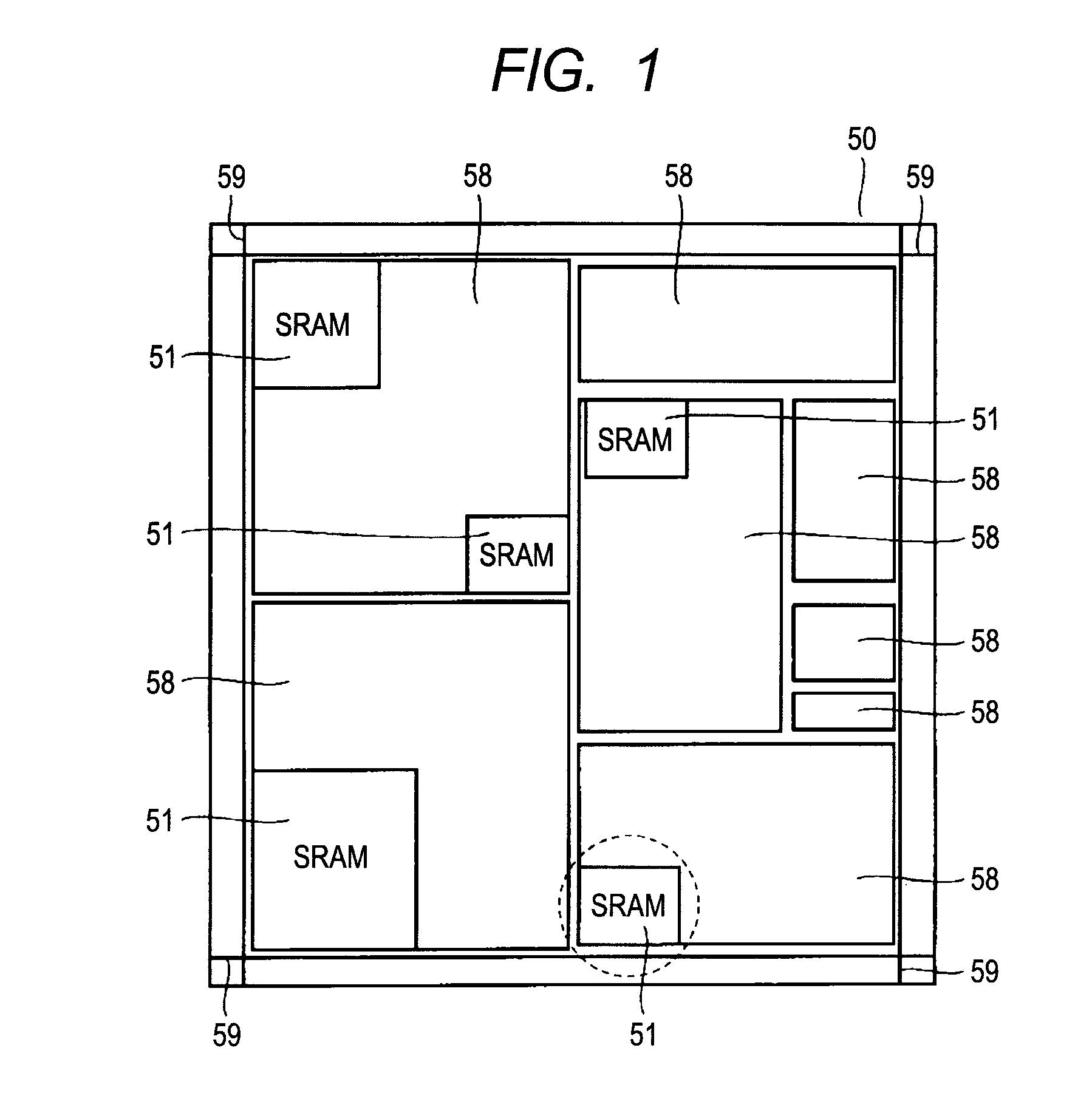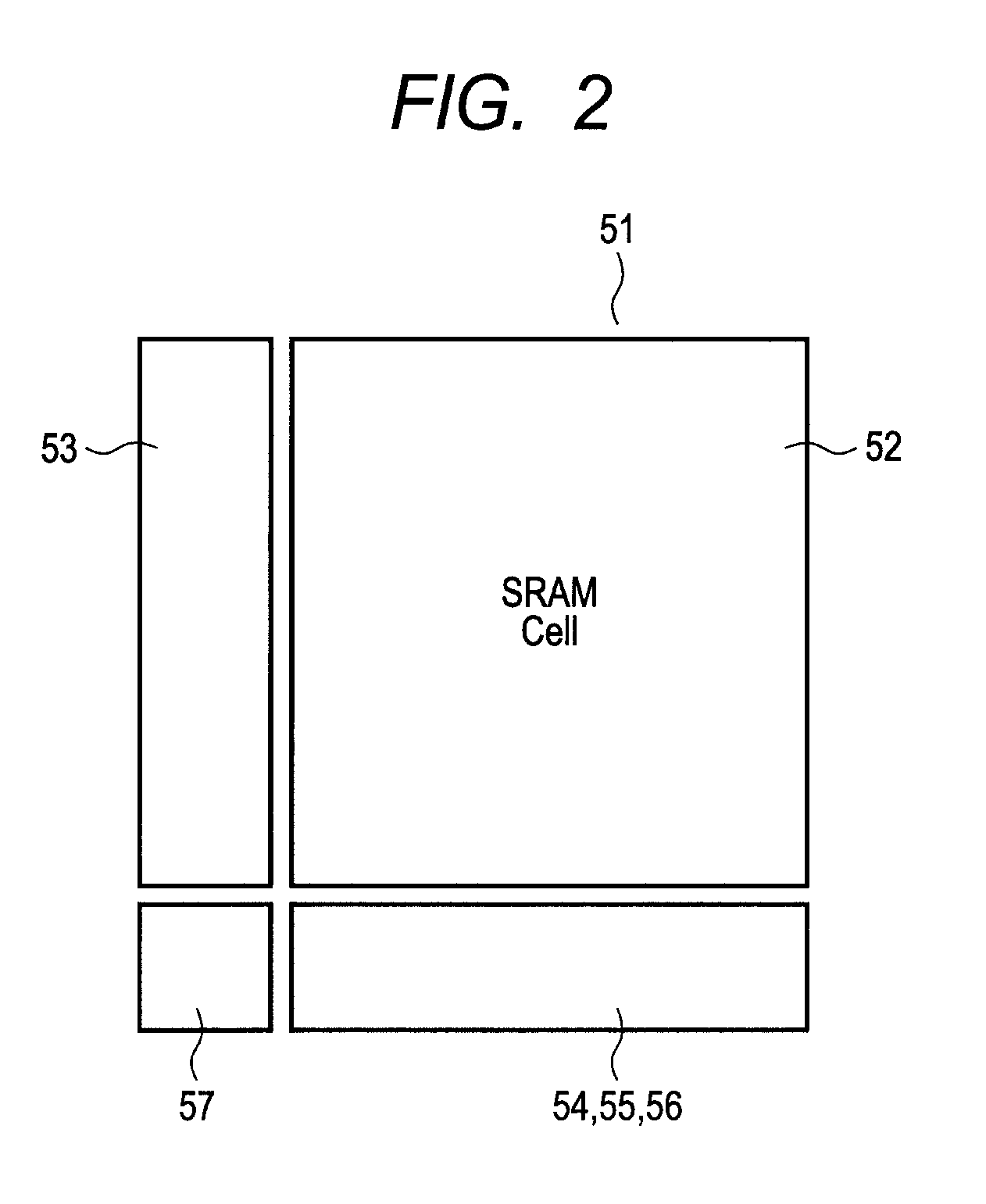Method of manufacturing semiconductor device, and semiconductor device
a manufacturing method and technology of semiconductor devices, applied in the direction of semiconductor devices, electrical appliances, transistors, etc., to achieve the effect of reducing the implantation mask
- Summary
- Abstract
- Description
- Claims
- Application Information
AI Technical Summary
Benefits of technology
Problems solved by technology
Method used
Image
Examples
first example
[0236]In a first example, the case will be described where, using the individual resist masks described in Embodiment 1, boron and carbon are implanted.
[0237]First, a description will be given of an equivalent circuit of a SRAM memory cell. As shown in FIG. 55, in the access transistors T1 and T2 in the semiconductor device according to the first example, the respective pairs of halo regions 17 formed therein include halo regions 17g coupled to the storage nodes SN1 and SN2 and halo regions 17h coupled to the bit lines BL and / BL, and the impurity concentrations of the halo regions 17g are set higher than the impurity concentrations of the halo regions 17h. In the drive transistors T3 and T4, the impurity concentrations of the respective pairs of halo regions 17 (17j) formed therein are set the same as the impurity concentrations of the halo regions 17g. Into the halo regions 17g and 17j among the halo regions 17g, 17h, and 17j, as an impurity, carbon is implanted in addition to bor...
second example
[0253]In a second example, the case will be described where, using the individual resist masks described in Embodiment 2, boron (p-type impurity) and carbon are implanted. As shown in FIG. 66, in the access transistors T1 and T2 of the semiconductor device according to the second example, the respective pairs of halo regions 17 formed therein include halo regions 17k coupled to the storage nodes SN1 and SN2 and halo regions 17m coupled to the bit lines BL and / BL, and the impurity concentrations of the halo regions 17k are set higher than the impurity concentrations of the halo regions 17m. In the drive transistors T3 and T4, the respective pairs of halo regions 17 (17p and 17n) formed therein include halo regions 17n coupled to the storage nodes SN1 and SN2 and halo regions 17p coupled to the ground potential, and the impurity concentrations of the halo regions 17n are set higher than the impurity concentrations of the halo regions 17p. Into the halo regions 17k and 17n among the h...
PUM
 Login to View More
Login to View More Abstract
Description
Claims
Application Information
 Login to View More
Login to View More - R&D
- Intellectual Property
- Life Sciences
- Materials
- Tech Scout
- Unparalleled Data Quality
- Higher Quality Content
- 60% Fewer Hallucinations
Browse by: Latest US Patents, China's latest patents, Technical Efficacy Thesaurus, Application Domain, Technology Topic, Popular Technical Reports.
© 2025 PatSnap. All rights reserved.Legal|Privacy policy|Modern Slavery Act Transparency Statement|Sitemap|About US| Contact US: help@patsnap.com



